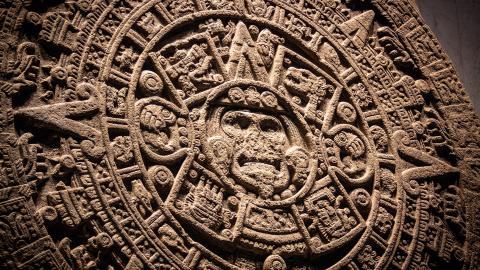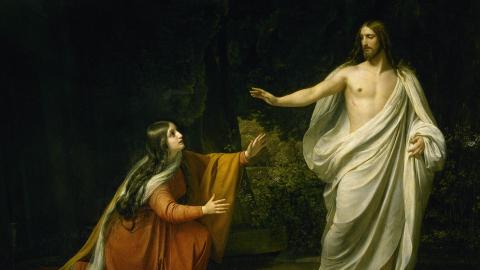
Love, lust and life: The history of the Kama Sutra
Image: Ancient bas-relief at famous erotic Kandariya Mahadev temple in Khajuraho, India | Shutterstock.com
When most people think of the Kama Sutra, images of ecstatic couples woven around each other like human pretzels come to mind. But the truth is, this time-honoured text is much, much more than just an ancient precursor to The Joy of Sex.
A guide to life and love
Written in Sanskrit, the sacred language of Hinduism, the Kama Sutra (‘Principles of Love’) is a sprawling text which covers all aspects of romance, seduction, and happiness. Sex is only one component of this philosophical compendium. And, far from being focused on ornate depictions of copulating couples, the original Kama Sutra didn’t even contain illustrations.
Encompassing seven books, the text is incredibly detailed, covering everything from how to tell if someone finds you attractive and how to flirt, right through to the dynamics of marriage and family life. When the text does tackle sex, it takes a very close look at the smallest intricacies of the act, almost forensically analysing everything from how bodies interlock, to the sounds lovers make while in the throes of passion.
Different categories of moans are carefully laid out, including the ‘whimper’, the ‘babble’, the ‘wail’ and the ‘shriek’. Indeed, the writer wisely reminds us that ‘cries like those of doves, cuckoos, green pigeons, parrots, bees, moorhens, geese, ducks and quails are important options for use in moaning’.
The writer is equally exacting when it comes to describing sexual positions, naming a notable variation ‘the twining creeper’ and at one point describing how ‘the thighs are used like a pair of tongs’.
While it was written thousands of years ago, the Kama Sutra is also strikingly open-minded, progressive and unafraid of challenging social constraints. There are whole sections on how to commit adultery, including strategies for seducing other people’s partners. The text also discusses same-sex relations and discusses people who challenge gender norms and embody a ‘third nature’.
Speaking about this aspect of the book to the BBC, leading Kama Sutra expect Wendy Doniger highlights how its ‘ideas about gender are surprisingly modern… and its stereotypes of feminine and masculine natures are unexpectedly subtle. It also reveals attitudes to women's education and sexual freedom, and non-judgemental views on homosexual acts, that are strikingly more liberal than those of other texts in ancient India.’
The origins of the text
We don’t know exactly when the Kama Sutra was written, though it’s generally believed to date to sometime in the 3rd century. Authorship is attributed to the Indian philosopher Vatsyayana, whose life is almost a complete mystery to us, though he’s thought to have lived and worked in the ancient Indian city of Pataliputra, now called Patna.
In the text, the writer describes themself as a ‘religious student’ who is ‘wholly engaged in the contemplation of the Deity’. This implies that the writer of what became known as history’s most famous ‘dirty book’ was in fact a celibate.
Emergence in the West
Over the many centuries since its conception, the Kama Sutra was embraced as a core part of the Indian literary canon, with illustrated editions being lovingly crafted during the era of the Mughal Empire. But how did it go from a work of esoteric Asian wisdom to a permanent part of the global pop cultural landscape – endlessly re-published, re-interpreted and parodied?
It can largely be put down to the efforts of the Victorian explorer and writer Sir Richard Burton. One of the most influential orientalist scholars of the time, his adventures included journeying to Mecca while disguised as a Muslim pilgrim and trekking to the African Great Lakes.
His copious writings included taboo-smashing takes on sexuality. To give just one example, he had a penchant for recording the penis sizes of men in different parts of the world. So, it’s no surprise he was fascinated by the Kama Sutra, collaborating with Indian scholars Bhagwan Lal Indraji and Shivaram Parashuram Bhide to produce an English-language version in 1883.
An enduring impact
Bringing out the Kama Sutra in the United Kingdom was a daring move, given how stringent the Victorian obscenity laws were. To circumvent the prudes of his day, Burton had the book printed ‘for private circulation only’, through a made-up organisation he called the Kama Shastra Society of London.
Its cultural impact was almost immediate. Indeed, the book became widely pirated in the late Victorian era, with bootleg editions often dropping any reference to Burton himself. Its influence and legend grew exponentially when it was ‘officially’ published in Britain and the US in the 1960s, just in time to coincide with the sexual and cultural revolutions that were spreading across the West.
An iconic artefact of the ‘free love’
era, the book has had an ever-shifting significance for scholars: as a fascinating depiction of ancient Indian social mores, as a proto-feminist treatise, and – with regards to the Burton edition – as a landmark piece of Victorian Orientalist writing.
Of course, as far as ordinary folks and consumers of pop culture go, the Kama Sutra will forever be a byword for ambitious bedroom exploits. While the text is certainly more read about than actually read, its legacy can be seen in everything from movies to porn films to – perhaps inevitably – a leading brand of condoms.
Kama Sutra: Key facts
You don’t have to be an expert in the history and literature of Hindu thought to know a thing or two about the Kama Sutra. It’s undeniably one of the most significant literary artefacts of any culture, continuing to fascinate and surprise even today. Here are some things you might not have known about the iconic work.
1 It’s just one among many sutras
The Kama Sutra is the most well-known example of a genre within Hinduism, Buddhism and Jainism called the sutra. In the Hindu context, sutras are volumes composed of catchy statements conveying key principles and observations about life and philosophy.
Other examples include the Nyaya Sutras, an important work on logic and metaphysics from the Nyaya school of Hindu philosophy, and the Yoga Sutras of Patanjali, which as the name suggests is one of the key foundational texts on the practice of yoga.
2 The author of the Kama Sutra was celibate
We know vanishingly little about Vatsayana, the author of the Kama Sutra. But one of the few generally accepted facts is that he composed this landmark text on love and sexuality while living as a devout celibate.
We know this because he himself mentions it towards the very end of the Kama Sutra, writing that his soon-to-be-famous aphorisms were ‘composed, according to the precepts of Holy Writ, for the benefit of the world, by Vatsyayana, while leading the life of a religious student, and wholly engaged in the contemplation of the Deity.’
3 The Kama Sutra wasn’t legal in the UK until the 1960s
An English translation of the Kama Sutra was in circulation from the Victorian era thanks to the work of adventurer and orientalist Sir Richard Burton, who said that ‘The free treatment of topics usually taboo'd will be a great national benefit.’ However, it would be quite some time before the text would officially see the light of day in the UK.
In 1960, Penguin Books was prosecuted under the Obscene Publications Act over the publication of DH Lawrence’s steamy tale of rural romance, Lady Chatterley’s Lover. When Penguin was found not guilty, it ushered in a new era of permissiveness regarding what could be talked about in popular culture – and what books could be published.
Three years later, the Kama Sutra was brought out by a mainstream publisher, becoming one of the many transgressive books, films, plays and albums that helped propel the sexually liberated attitudes of the 1960s and 70s.
4 The original translation contained deliberate mistranslations
In the words of Sanskrit scholar Professor Wendy Doniger, author of Redeeming the Kama Sutra, the Victorian version released by Sir Richard Burton became ‘one of the most pirated books in the English language’. And it was partly thanks to the ingenuity of the translation that it proved so popular to readers at the time.
As Professor Doniger has pointed out, references to male and female sexual organs were deliberately mistranslated, with the more explicit wording of the original text replaced with the Sanskrit terms ‘lingam’ and ‘yoni’. This helped make it more palatable to Victorians, and – as Doniger has written – ‘assure them that the text was not about real sexual organs, their sexual organs, but merely about the appendages of weird, dark people far away.’
Professor Doniger has also emphasised that the Victorian translation also obscures and sidesteps important elements of the original, whether intentionally or through error. This includes skipping over references to the female G-spot and ‘the importance of women’s pleasure’.
4 The Kama Sutra is a milestone in LGBTQ+ writing
The Kama Sutra isn’t shy about openly acknowledging the existence of different sexual orientations. One passage casually states that ‘the male servants of some men carry on the mouth congress with their masters. It is also practised by some citizens, who know each other well, among themselves. Some women of the harem, when they are amorous, do the acts of the mouth on the yonis of one another.’
The original Sanskrit text also refers to people of a ‘third sex’ who can be masculine or feminine presenting. Members of the latter group are described by Vatsayana as adopting the ‘dress, speech, gestures, tenderness, timidity, simplicity, softness and bashfulness’ of women.
The Victorian translation inaccurately refers to those of the third sex as ‘eunuchs’, presumably to make it more Victorian-friendly. As Professor Doniger writes in Redeeming the Kama Sutra, ‘eunuch – in the particular sense of men intentionally castrated in order to serve as guardians in the royal harem – did not exist in India before the Turkish presence in the ninth century’. In other words, well after the Kama Sutra was composed.
5 There’s another, lesser-known, even sexier Sanskrit text
It’s not a household name like the Kama Sutra, but there’s another Indian text, written in Sanskrit, which lays out even more juicy insights into human sexuality. It’s called the Ananga Ranga, which was written by Kalyanamalla Indian poet of the 15th or 16th century.
Coming hundreds of years after the Kama Sutra, it takes direct inspiration from the earlier text, and delves deeply into human anatomy, seduction, and different kinds of sexual intimacy. There’s also a lot in there about aphrodisiacs and natural methods of improving sexual performance (including ‘prescriptions for thickening and enlarging the member’).
In 1885, just a few years after publishing the Kama Sutra, Sir Richard Burton’s private Kama Shastra Society released a translation of the Ananga Ranga. However, despite being a treasure trove of fascinating insights and carnal commentaries, it has never enjoyed the same recognition in the West as its forebear.




















